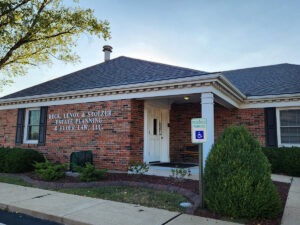There is so much to know about Medicaid, according to the experienced team at Beck, Lenox & Stolzer Estate Planning and Elder Law, LLC. Our firm has been working with Medicaid for over twenty years now. With Medicaid planning, understanding the “snapshot date” determines the program’s financial picture of a couple, which determines their eligibility and asset retention. The snapshot date is generally when a Medicaid applicant enters a long-term care facility or hospital for at least 30 consecutive days. By understanding the ramifications of Medicaid’s snapshot date, you can retain the most assets possible, while gaining access to valuable government benefits.
Why Is the Snapshot Date Important?
The snapshot date impacts how Medicaid assesses your finances. Medicaid counts the couple’s combined assets on this date to decide how much the community spouse can retain and what the applicant needs to spend down to qualify for benefits. According to ElderLawAnswers, this is among the most important factors in maintaining the financial stability of the community spouse who remains at home.
How Is the Community Spouse Resource Allowance (CSRA) Calculated?
The community spouse, or well spouse, is allowed to keep a portion of the couple’s assets, known as the CSRA. In 2023, the maximum CSRA is $148,620, meaning the community spouse can keep up to this amount without requiring a court order. As of July, 2024, that amount rose to $154,140. The minimum CSRA in 2024 is $30,828.
Each state has different allowances that affect how much the community spouse can retain. Working with an estate planning or Medicaid planning attorney can help you accurately calculate your CSRA.
How is the Snapshot Date Determined?
The snapshot date is generally the first day of a 30+ day period when the applicant is institutionalized. If the applicant is in and out of the hospital or nursing home, the snapshot date is the first date of entry.
For those applying for Medicaid home care through waiver programs, the snapshot date can be either the date of application or when the applicant is determined to need nursing home-level care. The choice of date can have significant ramifications for the assets you can keep.
What Does Spending Down Mean?
Spending down refers to reducing countable assets to qualify for Medicaid. If the couple’s assets exceed the allowed limit on the snapshot date, they must spend down the excess. This can include paying off debts, purchasing exempt assets, or making home improvements. Spending down in a strategic manner can help protect the financial well-being of the community spouse.
How Can Proper Planning Help?
Planning for Medicaid’s snapshot date can maximize a couple’s assets. This includes strategic asset spending down and understanding state-specific CSRA rules. Consulting with an elder law attorney can provide tailored advice to optimize asset retention and Medicaid eligibility. An attorney can also help navigate complex Medicaid rules and ensure that all necessary documentation is accurately completed.
What Medicaid Planning Strategies are Available?
Several strategies can be employed to manage assets before the snapshot date. These might include transferring assets to the community spouse, investing in exempt assets like home improvements, setting up a Medicaid-compliant annuity, or creating an irrevocable trust. Each strategy has its rules and potential benefits, and professional guidance can ensure that these strategies are used effectively.
Contact a Medicaid Planning Attorney
Proper Medicaid planning and understanding the snapshot date , as well as other factors, will help to maximize your benefits and held assets. While the program is infamously complex, you can make it simple by contacting an elder law attorney. Contact our firm today to schedule a free phone consultation and start preserving your wealth.
Key Takeaways
- Understand the Snapshot Date: Knowing the exact snapshot date is crucial for accurate Medicaid planning and asset assessment.
- Community Spouse Resource Allowance (CSRA): Familiarize yourself with your state’s CSRA limits to ensure the community spouse retains maximum assets.
- Strategic Spending Down: Spend down assets wisely by paying off debts, making home improvements, or purchasing exempt assets.
- Consult an Attorney: Professional guidance can help navigate complex Medicaid rules and optimize asset retention.
- Effective Planning: Proper planning can secure your financial future and maximize eligibility for Medicaid benefits.
Reference: ElderLawAnswers (Oct. 19th, 2023) “How Medicaid’s “Snapshot” Date Affects Medicaid Eligibility”










